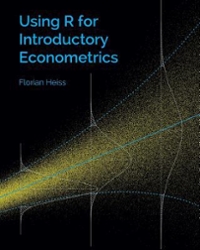Question
ECN 160A International Microeconomics K. Russ Spring 2010 Final Exam I.Multiple Choice (3pts each, 45pts total) 1.External economies of scale (a)may be associated with a
ECN 160A International Microeconomics
K. Russ
Spring 2010
Final Exam
I.Multiple Choice (3pts each, 45pts total)
1.External economies of scale
(a)may be associated with a perfectly competitive industry.
(b)cannot be associated with a perfectly competitive industry.
(c)tends to result in one huge monopoly.
(d)tends to result in large profits for each firm.
(e)occur when each firm must pay a fixed cost of production.
2.If the U.S. has a lower marginal propensity to consume (MPC) imports as compared to both its MPC for exportables and nontradables, then sending $100m in aid to earthquake victims in Pakistan will
(a)worsen the U.S. terms of trade.
(b)improve the U.S. terms of trade.
(c)leave the world terms of trade unaffected.
(d)worsen the terms of trade of both donor and recipient countries.
(e)None of the above.
3.If some industries exhibit internal (firm specific) increasing returns to scale in each country, we should not expect to see
(a)intra-industry trade between countries.
(b)perfect competition in these industries.
(c)inter-industry trade between countries.
(d)high levels of specialization in both countries.
(e)None of the above.
4.A monopoly firm will maximize profits by
(a)charging the same price in domestic and in foreign markets.
(b)producing where the marginal revenue is higher in foreign markets.
(c)producing where the marginal revenue is higher in the domestic market.
(d)equating the marginal revenues in domestic and foreign markets.
(e)None of the above.
5. Two countries engaged in trade in products with no scale economies, produced under conditions of perfect competition, are likely to be engaged in
(a)monopolistic competition.
(b)inter-industry trade.
(c)intra-industry trade.
(d)Melitz-type trade.
(e)None of the above.
6.The simultaneous export and import by South Korea of steel produced in South Korea would be an example of
(a)reciprocal dumping.
(b)imperfect competition.
(c)intra-industry trade.
(d)imperfect market segmentation.
(e)All of the above.
7. If a good is imported into (large) country H from country F, then the imposition of a tariff in country H in the presence of the Metzler Paradox,
(a)raises the price of the good in both countries (the "Law of One Price").
(b)raises the price in country H and cannot affect its price in country F.
(c)lowers the price of the good in both countries.
(d)lowers the price of the good in H and could raise it in F.
(e)raises the price of the good in H and lowers it in F.
8. A lower tariff on imported steel would most likely benefit
(a)foreign producers at the expense of domestic consumers.
(b)domestic manufacturers of steel.
(c)domestic consumers of steel.
(d)workers in the steel industry.
(e)None of the above.
9.A tax of 20 percent on imported garlic is an example of a(n)
(a)specific tariff.
(b)ad valorem tariff.
(c)nominal tariff.
(d)effective protection tariff.
(e)None of the above.
10. An Optimal Tariff
(a)could theoretically happen when a small country levies a tariff.
(b)refers to a situation when a tariff hurts a country's economic welfare.
(c)refers to a situation when the imposition of a tariff lowers domestic prices.
(d)refers to a situation when the imposition of a tariff helps foreign exporters.
(e)None of the above.
11.A production subsidy in a small country
(a)raises the consumer price of the export good at home.
(b)lowers the consumer price of the export good at home.
(c)redistributes revenue from export producers to foreign producers.
(d)redistributes revenue from export producers to domestic consumers.
(e)None of the above.
12.The opportunity to exploit economies of scale is one of the gains to be made from removing tariffs and other trade distortions. These gains will be found by a decrease in
(a)world prices of imports.
(b)the consumption distortion loss triangle.
(c)the production distortion loss triangle.
(d)Both (b) and (c).
(e)None of the above.
13.International trade based on scale economies is likely to be associated with
(a)Ricardian comparative advantage.
(b)comparative advantage associated with Heckscher-Ohlin factor-proportions.
(c)comparative advantage based on quality and service.
(d)comparative advantage based on diminishing returns.
(e)None of the above.
14.The fact that trade barriers often impose harm on large numbers of people, and benefit only a few may be explained by
(a)the lack of political involvement of the public.
(b)the power of advertisement.
(c)the problem of collective action.
(d)the basic impossibility of the democratic system to reach a fair solution.
(e)None of the above.
15.Given the following information:
Labor Requirements to Produce One Unit
ClothWheat
Home2020
Foreign6030
(a)Neither country has a comparative advantage.
(b)Home has a comparative advantage in cloth.
(c)Foreign has a comparative advantage in cloth.
(d)Home has a comparative advantage in wheat.
(e)Home has a comparative advantage in both products.
Step by Step Solution
There are 3 Steps involved in it
Step: 1

Get Instant Access to Expert-Tailored Solutions
See step-by-step solutions with expert insights and AI powered tools for academic success
Step: 2

Step: 3

Ace Your Homework with AI
Get the answers you need in no time with our AI-driven, step-by-step assistance
Get Started


